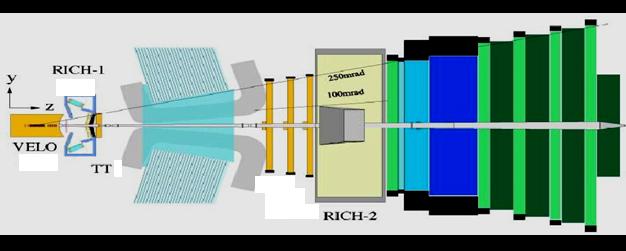What is the VELO?


(left) Schematic of LHCb; (right) one of two VELO halves.
The VELO is a precise particle tracking detector which surrounds the proton proton collision point inside LHCb. It is composed of 42 silicon "modules", which are spread along both sides of the proton beam (21 each side). The whole device is about a metre long.
The VELO has a unique design. To ensure optimal precision the silicon sensors (the active part of the VELO) should be as close to the beam as possible. The sensors should also retract during beam setup and acceleration to prevent accidental damage. The VELO actually sits inside a vacuum vessel - with a thin sheet of aluminium (the "rf foil") separating it from the primary vacuum inhabited by the proton beams. The two halves of modules are mechanically moved in to enclose the beam during data-taking, and out to a safe distance afterwards.
Why have a VELO?
The LHCb experiment was designed to study why there's so little antimatter in the universe - why matter and antimatter can behave differently. The best way to investigate this is to study the properties of particles containing b quarks. Actually doing so requires that we can identify b quarks in real time from the 40 million proton proton interactions occurring per second inside LHCb. The VELO is key to this, and here's why:- A b quark lives long enough to travel about a millimetre before it decays to other particles.
- If we measure the positions of those particles we can reconstruct the paths they took through the experiment.
- If we measure this accurately enough we can extrapolate the paths back to a common production point. If this point is significantly different to the point all other particles come from, we have evidence of a b quark.
- If we can work that out quickly enough, we can record the interactions with b quarks in and analyse their behaviour later.
